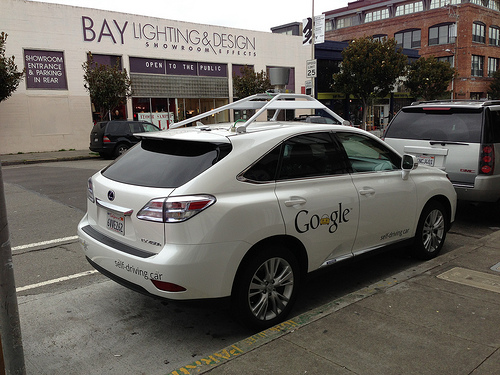I’m pretty sure that, by now, you know that self-driving cars are no longer fiction. They are a reality. This is 2015, Google, Audi, Mercedes Benz, Ford, and BMW have all presented prototypes of this new technology. The prototypes, like we humans, are not without their bugs. The good thing, though, is that they learn quickly and right now, they learn from each other. So together, these cars have about 40-years’ worth of driving experience.
The current buzz is that they will become commercially available by 2020. In fact, by 2020, there will be 10 million self-driving cars (SDCs) on the road. The point now is, how will these cars fare in Nigeria? Sounds like a fun blog post, no? Let’s see.
Per 100,000 automobile fatalities in the world every year, Nigeria records 33.7 of them. You don’t need me to tell you that’s not a good thing. With the development of self-driving cars (SDCs) and their future commercialization, I believe they will improve road safety in Nigeria. SDCs are safe drivers. In an article on The Oatmeal Blog, the author recounts his experience in a Google SDC. He writes that these cars are timid, drive slowly and deliberately. Even though they have not been fully developed to travel long distances and urban driveways, they are a work in progress.
Here’s what The Oatmeal writes about his experience:
“The cars use a mixture of 3D laser-mapping, GPS, and radar to analyze and interpret their surroundings, and the latest versions are fully electric with a range of about 100 miles. The radar is interesting because it allows the car to see through objects, rather than relying on line-of-sight. At one point during our drive the car recognized and halted for a cyclist who was concealed behind a row of hedges.” The car could see beyond its obvious line and range of sight.
I reckon that in the future, these cars will use predictive data gathered from several test drives to adapt their own behavior on the road. With the level of intelligence that can be synthesized by these SDCs, they could be adaptable around the notorious Danfos (Lagos’ popular public transit buses) that dot Lagos roads. The cars will also be able to predict traffic patterns and recognize unsafe situations from miles away (such as potential accidents, road robbery attacks, etc.). Of course, this is me thinking out loud with hopes that someone picks up this valuable information and applies it. Or maybe they are already applying it. But with Nigeria’s faulty mapping system, implementing this will be a problem. However, Nairobi looks like a better place for SDCs right now in Africa.
Another way SDCs will benefit us in Nigeria will be their ability to safely transport elderly men and women, pregnant women and disabled people. They constitute a substantial portion of our population.
The downside, however, is that right now most of the SDCs in existence are small-sized. Having too many SDCs in Nigeria will not help alleviate the road traffic problems in many of the metropolitan areas. However, in time, this technology will be incorporated into larger vehicles like SUVs, minivans and buses. Then, we can adopt it in Nigeria. But until then, I suggest we stick with our human-driven cars.
Photo Credit: torrez via Compfight cc





















